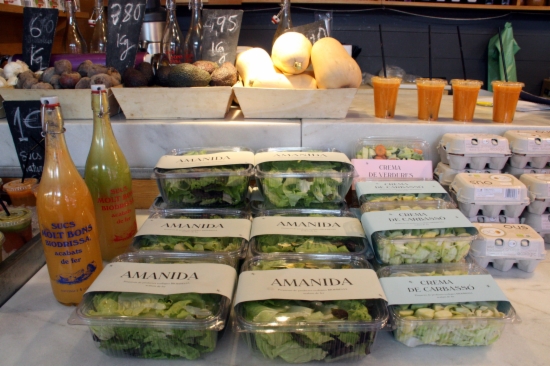Catalan economy grows by an annual rate of 1.4% in the second quarter of 2014
Catalonia’s GDP recorded an annual increase of 1.4% in the second quarter of 2014, the best result since September 2008, according to official figures published on Friday by the Catalan Institute of Statistics (IDESCAT). The 1.8% increase in domestic demand means that the annual rate of Catalonia’s GDP is higher than Spain's average, and more than that of the European Union (EU28), both located at 1.2%. Not only is Government spending showing a favourable trend, but there has also been growth in the services sector, and those of industry and agriculture. From September 2014, the EU has set mandatory implementation of the new European System of Accounts (ESA 2010), which IDESCAT plans to have in place to coincide with the results of the GDP in the fourth quarter of 2014.

Barcelona (ACN).- Catalonia’s economy is showing favourable trends of growth, according to figures released this Friday by the official Catalan Institute of Statistics (IDESCAT). Catalonia's GDP is increasing at an annual rate of 1.4% in the second quarter of 2014, the best result since September 2008. In addition, the 1.8% rise in domestic demand means that Catalonia’s GDP is rising at a faster rate than the rest of Spain, and the whole of the EU, both of which are located at 1.2%. This rise is thanks to increased household spending (2.2%), public administration expenditure (1.6%) and gross fixed capital formation (0.5%). Government spending also shows a favourable trend, for the first time since the end of 2010. However, the foreign sector’s contribution to the Catalan economy is negative: -0.2 points. As for the production of goods and services, Catalonia’s rate has increased by 0.6%, identical to the Spanish rate, and to be compared with a EU28 average of 0.2%.
The sharp rise in domestic demand (+1.8%), the highest since mid-2008, is thanks to increased household spending (2.2%), public administration consumption (1.6%), and gross fixed capital formation (0.5%). Household spending first reached a positive annual rate in the last quarter of 2013, (1.2%) a figure which has now been met in other sectors.
Government spending shows positive trend
Catalan Government spending is also showing a favourable trend; for the first time since the end of 2010 the foreign sector’s contribution to the Catalan economy is negative: -0.2 points. The total export of goods and services increased significantly to reach the annual rate of 3.5%, but due to the higher increase in imports (9.2%) the net contribution of the external sector was negative.
Catalan economy grows in major sectors
According to the analysis, in the second quarter of 2014 the Catalan economy has shown growth in the services sectors (2%), and those of industry (1.5%) and agriculture (0.5%). The construction sector is showing a negative rate of -5.1%.
Catalonia will implement EU standardized accounting
From September 2014, the EU has set mandatory implementation of the new European System of Accounts (ESA 2010), a standardization to develop estimates of national accounts in all EU countries. IDECSCAT plans to use the SEC 2010 for its annual and quarterly macroeconomic statistics as soon as the new Input-Output Catalonia 2011 table (a methodology of macroeconomic information connecting statistics from the Catalan economy to products and activities) is available, and to coincide with the publication of GDP results in the fourth quarter of 2014, and before Catalonia’s annual accounts.